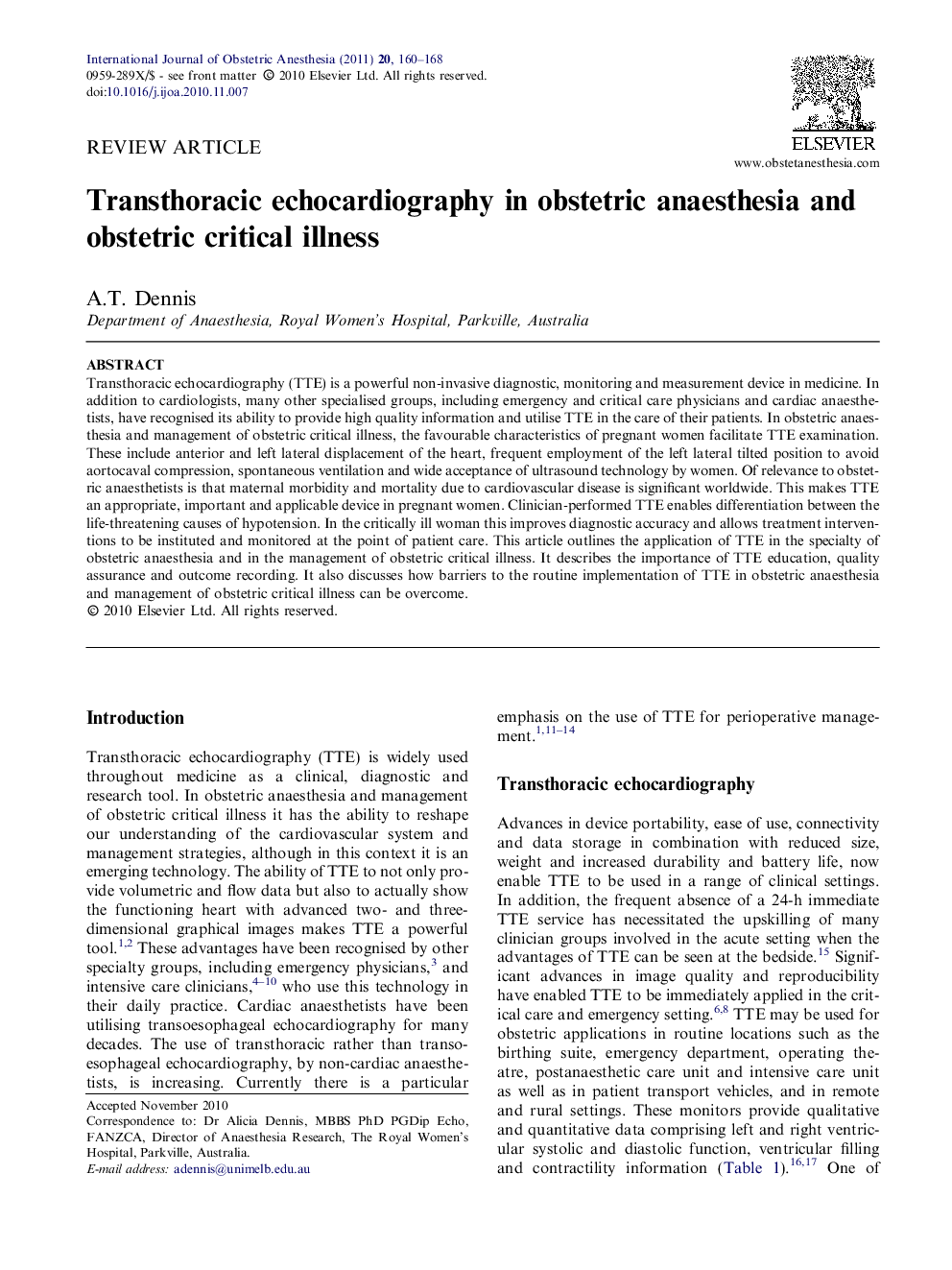| Article ID | Journal | Published Year | Pages | File Type |
|---|---|---|---|---|
| 2758022 | International Journal of Obstetric Anesthesia | 2011 | 9 Pages |
Transthoracic echocardiography (TTE) is a powerful non-invasive diagnostic, monitoring and measurement device in medicine. In addition to cardiologists, many other specialised groups, including emergency and critical care physicians and cardiac anaesthetists, have recognised its ability to provide high quality information and utilise TTE in the care of their patients. In obstetric anaesthesia and management of obstetric critical illness, the favourable characteristics of pregnant women facilitate TTE examination. These include anterior and left lateral displacement of the heart, frequent employment of the left lateral tilted position to avoid aortocaval compression, spontaneous ventilation and wide acceptance of ultrasound technology by women. Of relevance to obstetric anaesthetists is that maternal morbidity and mortality due to cardiovascular disease is significant worldwide. This makes TTE an appropriate, important and applicable device in pregnant women. Clinician-performed TTE enables differentiation between the life-threatening causes of hypotension. In the critically ill woman this improves diagnostic accuracy and allows treatment interventions to be instituted and monitored at the point of patient care. This article outlines the application of TTE in the specialty of obstetric anaesthesia and in the management of obstetric critical illness. It describes the importance of TTE education, quality assurance and outcome recording. It also discusses how barriers to the routine implementation of TTE in obstetric anaesthesia and management of obstetric critical illness can be overcome.
